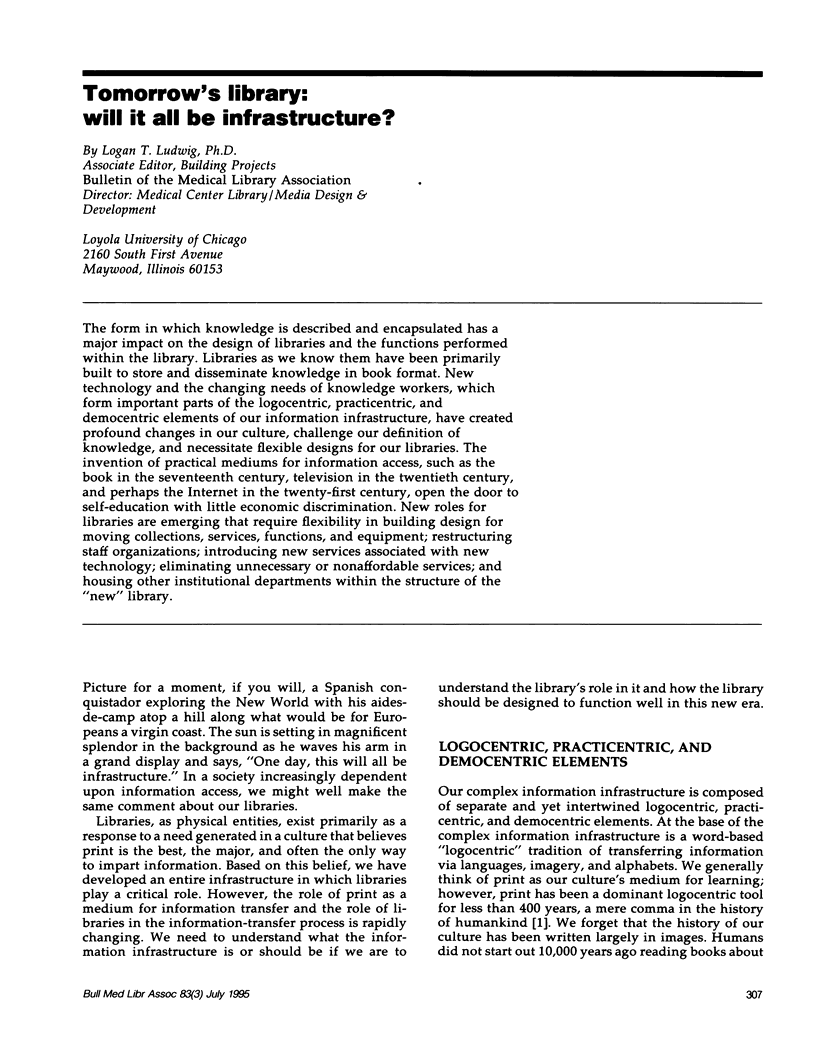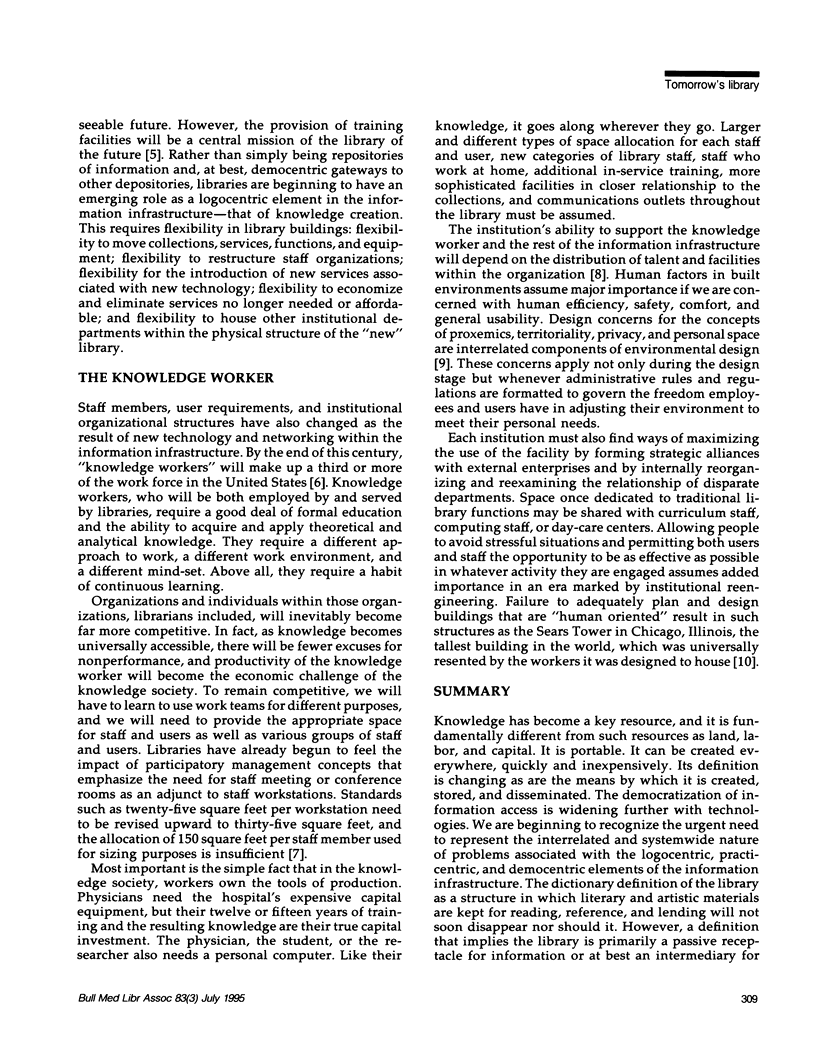Abstract
The form in which knowledge is described and encapsulated has a major impact on the design of libraries and the functions performed within the library. Libraries as we known them have been primarily built to store and disseminate knowledge in book format. New technology and the changing needs of knowledge workers, which form important parts of the logocentric, practicentric, and democentric elements of our information infrastructure, have created profound changes in our culture, challenge our definition of knowledge, and necessitate flexible designs for our libraries. The invention of practical mediums for information access, such as the book in the seventeenth century, television in the twentieth century, and perhaps the Internet in the twenty-first century, open the door to self-education with little economic discrimination. New roles for libraries are emerging that require flexibility in building design for moving collections, services, functions, and equipment; restructuring staff organizations; introducing new services associated with new technology; eliminating unnecessary or nonaffordable services; and housing other institutional departments within the structure of the "new" library.
Full text
PDF



Selected References
These references are in PubMed. This may not be the complete list of references from this article.
- Frisse M. E. Acquiring information management skills. Acad Med. 1994 Oct;69(10):803–806. doi: 10.1097/00001888-199410000-00003. [DOI] [PubMed] [Google Scholar]


